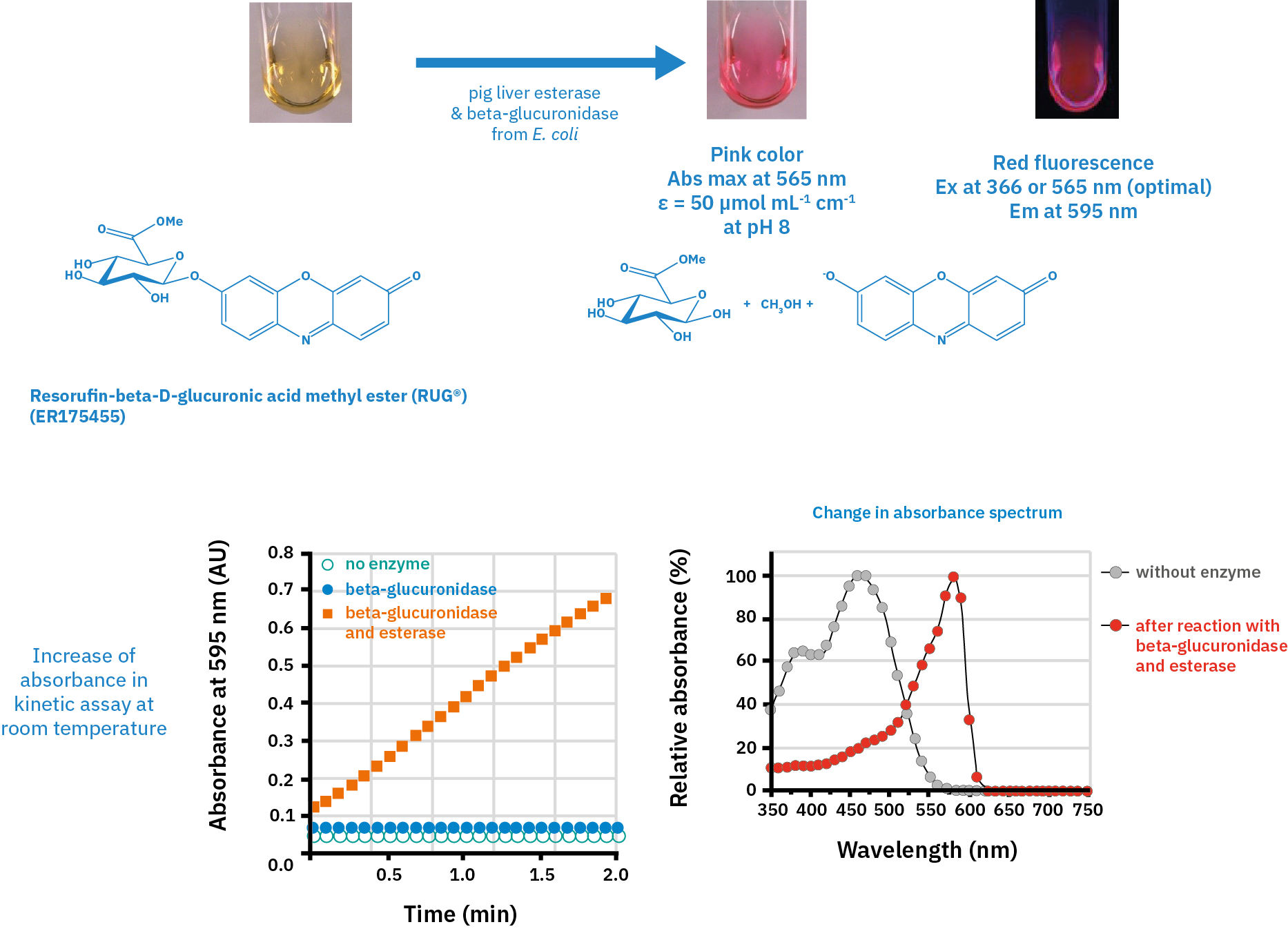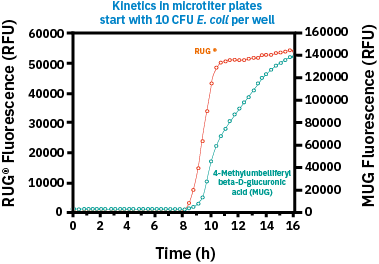Enzymes, the catalysts of life, play a crucial role in every biochemical reaction within living cells. Their specific partners, the enzyme substrates, are now being harnessed for groundbreaking applications in microbiology.
These small molecule enzyme substrates are transforming how we detect microbes and diagnose diseases, offering unprecedented speed, specificity and cost-effectiveness.
Recent market analysis indicates that the enzyme substrate market is poised for significant expansion, with projections indicating a value of $26.1 billion by 2032.1
This growth trajectory reflects a robust compound annual growth rate (CAGR) of 6.9% throughout the forecast period from 2024 to 2032.
The urgency of rapid bacterial detection
The growing threat of multidrug-resistant bacterial pathogens underscores the need for robust and simple detection methods. A recent report in The Lancet estimated that, in 2021, 4.71 million deaths were attributable to antimicrobial resistance (AMR).2
Traditional culturing techniques, although reliable, often prove to be time-consuming and lack the speed required to effectively manage infections and contain outbreaks.
Moreover, these methods may lack the specificity to identify certain bacterial species, potentially leading to misdiagnosis and inappropriate treatment. This has fuelled the search for alternative detection methods that are not only rapid and reliable … but also cost-effective and readily deployable.
Enzyme substrates have emerged as a promising solution in this quest for advanced bacterial detection. These molecules are designed to react with specific enzymes produced by bacteria, generating a detectable signal that reveals the presence of the microbe.
Synthetic enzyme substrates: a breakthrough in specificity
One of the most promising approaches involves synthetic enzyme substrates. These are designed to be specific for a particular bacterial enzyme and are linked to a “signalogenic” moiety.
When the target enzyme acts on the substrate, it releases a signalophore, generating a measurable signal that reveals the presence of the specific bacteria.
Considering the escalating AMR threat, the rapid and accurate detection capabilities of enzyme substrates position them as a crucial tool to combat the spread of drug-resistant pathogens. This approach offers several advantages compared with traditional methods.
- Specificity: They target bacterial enzymes, allowing for precise identification.
- Rapidity: Signals can be detected quickly, often without the need for a subculture or additional biochemical tests.
- Economic viability: These methods are often more cost-effective than traditional culturing techniques.
The power of chromogenic, fluorogenic, and luminogenic substrates
The success of enzyme substrate-based detection methods largely depends on the type of signal generated.
Chromogenic substrates: Chromogenic enzyme substrates were first introduced into research laboratories during the early 1970s.
They were quickly adopted to develop assays for enzymes, proenzymes and inhibitors within the coagulation system, paving the way for their use in clinical laboratories to diagnose and treat coagulation disorders.
These substrates produce a visible colour change following enzymatic cleavage, providing a simple and easily interpretable signal. Chromogenic substrates are widely used in culture media, diagnostic tests and environmental monitoring owing to their convenience and cost-effectiveness (Figure 1).
Examples include X-Gal (5-bromo-4-chloro-3-indolyl-β-D-galactopyranoside) for the detection of β-galactosidase activity and various substrates to identify specific bacterial enzymes in urine and stool samples.
Biosynth has developed a novel family of chromogenic and fluorogenic substrates called ALDOL that overcome the limitations of traditional indoxyl substrates. These substrates do not require oxidative dimerisation for colour development, making them suitable for use under both aerobic and anaerobic conditions.
They offer a wide range of colours and are highly stable, enabling their use in various applications, including culture media and diagnostics.

Figure 1: Applications such as measuring enzymatic activity in liquid in a cuvette might require the substrate to produce a soluble product (A): substrates giving insoluble products are better suited for (B) zymograms, (C) membrane-bound applications such as Western blot or (D) dot blotting and (E) culture plates for bacterial growth with ALDOL reagents
Fluorogenic substrates: Fluorogenic substrates began to appear in research during the late 1950s. This aligns with the development of more sophisticated fluorescence detection techniques. One of the earliest prominent examples involves the use of fluorescein diacetate to measure esterase activity.
This was used to assess cell viability as live cells with active esterases would cleave the substrate and release fluorescent fluorescein.
These substrates release a fluorescent compound upon enzymatic cleavage, offering higher sensitivity compared with chromogenic substrates.
Fluorogenic substrates are particularly useful in applications requiring quantitative measurements, such as enzyme assays, ELISA (enzyme-linked immunosorbent assay) and fluorescence microscopy.
Examples include 4-methylumbelliferyl-β-D-glucuronide (MUG) for the detection of β-glucuronidase activity, often used to identify Escherichia coli, and various substrates for the detection of specific enzymes in biological samples.
Biosynth has developed a proprietary fluorogenic substrate called RUG (resorufin-β-D-glucuronic acid methyl ester) for the specific detection of E. coli (Figure 2). This substrate offers high sensitivity and specificity, making it a valuable tool for environmental monitoring and food safety applications.
L-Alanine-para-aminobenzyl-resorufin is a highly sensitive fluorogenic substrate that’s used to detect L-alanine aminopeptidase activity, which is primarily found in Gram-negative bacteria. It allows for the rapid and specific discrimination of Gram-negative bacteria from other bacterial species.

Figure 2: RUG is a substrate for glucuronidase and delivers a double read-out possibility, giving both a pink colour and a red fluorescence
Luminogenic substrates: These substrates produce light upon enzymatic reaction, offering the highest sensitivity among the three categories. Luminogenic substrates are ideal for detecting low levels of bacterial activity or specific enzymes in biological samples.
Luminogenic substrates began to gain traction in research during the mid-to-late 1960s, coinciding with growing interest in bioluminescence and the discovery of key enzymes such as luciferase.
These substrates are widely used in reporter gene assays, ATP detection and various diagnostic applications because of their high sensitivity and specificity. Examples include D-Luciferin, the substrate for firefly luciferase, and various substrates to detect specific enzymes in bacterial cultures and clinical samples.
Dioxetane-based chemiluminescent substrates are another class of luminogenic molecules that are highly stable until they react with a specific enzyme. This reaction triggers the breakdown of the dioxetane ring, leading to the release of energy in the form of light.
These substrates are widely used in various applications, including immunoassays, Western blots and other diagnostic tools owing to their exceptional sensitivity and low background luminescence.
They enable the detection of minute quantities of the target enzyme or analyte, making them invaluable in research and diagnostics.
Choosing the right reagents
The choice of substrate depends on the specific application and the level of sensitivity required. The selection of an enzyme substrate is a critical decision that should be guided by the application and the level of sensitivity required.
Chromogenic substrates, which produce a visible colour change after enzymatic cleavage, are ideal for qualitative or semiquantitative detection, visual screening and cost-sensitive applications.
They are widely used in bacterial culture media when colonies with the target enzyme develop a distinct colour (allowing for easy identification).
Examples include X-Gal, used in blue-white screening to detect β-galactosidase activity in bacteria, and various indoxyl substrates used in chromogenic media to identify specific bacterial enzymes in clinical samples.
When quantitative measurements and higher sensitivity are needed, fluorogenic substrates are the preferred choice. These substrates release a fluorescent compound that facilitates the detection of lower levels of enzyme activity or the target analyte.
They are particularly useful in applications such as ELISA, enzyme assays and fluorescence microscopy. Examples include MUG, used to detect β-glucuronidase activity to identify E. coli, and 4-methylumbelliferyl phosphate, used to detect alkaline phosphatase activity in various biological samples (Figure 3).

Figure 3: Comparative detection of E. coli with substrates RUGR and MUG
For applications demanding the highest sensitivity, luminogenic substrates are the optimal choice. These substrates produce light upon enzymatic reaction, enabling the detection of extremely low levels of enzyme activity or analyte.
They are ideal for applications such as reporter gene assays, ATP detection and highly sensitive diagnostic assays, especially when the target enzyme or analyte is present in very low amounts.
Examples include D-luciferin, used in the firefly luciferase system for ATP detection and reporter gene assays, and Luminol, used in chemiluminescent assays to detect various analytes, including horseradish peroxidase activity.
Leading the way in enzyme substrate innovation
Biosynth has been at the forefront of developing enzyme substrates for diverse applications, including culture media, diagnostics, food and environmental testing.
The company’s range of products includes chromogenic, fluorogenic and bioluminescent substrates, as well as specialised products for diagnostic probing and staining.
Biosynth’s enzyme substrates empower the pharmaceutical industry to combat the growing threat of bacterial infections and develop more effective diagnostic tools.
References
- www.snsinsider.com/reports/enzyme-substrates-market-1436.
- M. Naghavi, et al., “Global Burden of Bacterial Antimicrobial Resistance 1990–2021: A Systematic Analysis with Forecasts to 2050,” The Lancet 404(10459), 1199–1226 (2024).
